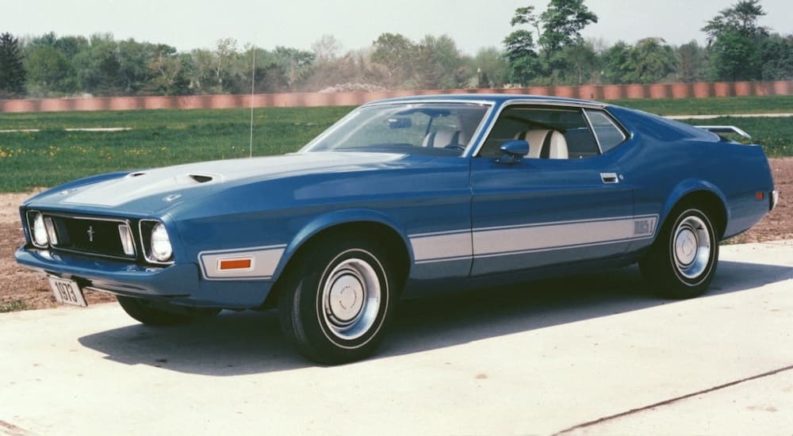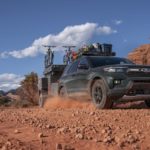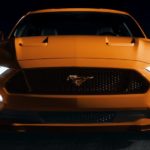Looking back at the 1970s and some of the vehicles that have become synonymous with that decade is a fun trip down the walkway known as nostalgia. After all, it’s interesting to see where trends and sensibilities were decades ago, and how much they differ from what’s considered socially acceptable in the modern day and age. While you might not find one of these at any number of local Ford dealers, enthusiasts are always happy to spot these classics in the wild.
However, popular culture has not been kind to Ford vehicles from this period in history. While there was certainly no shortage of Fords that are looked back upon with fondness, the time period is often maligned, mostly due to the disastrous results of the Pinto or the less-than-fondly-remembered redesign of the world’s first pony car, known as the Mustang II. Truth be told, the decade was one of unique designs that is sometimes overlooked.
I’m here to decimate the misconception that the 1970s were an unfortunate period of time for the manufacturer. The facts I intend on presenting here today will come in handy if you overhear someone ask, “What are the most popular Ford cars of the 1970s?” After reading this, you’ll be able to answer them with confidence.
Ford Ranchero
For someone unfamiliar with the intricacies of automotive history, the Ranchero might appear to be nothing more than a poor man’s Chevy El Camino. A similar body combines the bed of a pickup with the body of a car—and a name that conjures up images of the Latin American ranchers and trailblazers that helped to tame a land. While the El Camino lasted longer in production and has attained more popularity as the years have gone on, it was the Ranchero that arrived first—1957 to be precise, two whole years before the production of the El Camino began.
The Ranchero started out the decade with a bold new design, one that featured a split-top hood and intimidating front end. The sixth generation of the Ranchero, which lasted through the model years of 1972 to 1976, featured a wide variety of powertrain options, ranging from an inline-six to a few large block V8s. A monstrous 7.5-L was the biggest one available. However, the Ranchero also had the unfortunate luck to exist during a decade that suffered from two energy crises, which saw many manufacturers seek out the design of smaller-engined vehicles to accommodate consumers. Production of the Ranchero would conclude in 1979, but not before allowing Ford the opportunity to eventually replace it with the versatile Ford Ranger sometime later.
Ford Torino
There’s no doubt that the Mustang introduced the word to the pony car and put Ford on the map in terms of instigating the golden age of the muscle car. Because the industry is one that follows trends, this ushered in a wave of similar offerings from competitors such as Dodge and Chevy. In a perfect and more just world, the Ford Torino would be just as popular as the Challenger and Camaro—if not more so.
The second generation of the car began production at the very start of the decade, and similar to the Chevy Malibu or Nova, came in a wide variety of options. These ranged from a station wagon and four-door sedan to a sporty 2-door fastback that was more in line with the muscle cars that were beginning to skyrocket in popularity. Versatile and unique, the Torino began the 1970s on a high note, even being named Motor Trend’s “Car of the Year.”
If the first few years of the decade were the Torino’s golden age, then you could consider the middle of the decade as the fall of the empire. By the time the vehicle ceased production in 1976, new federal regulations put a limitation on the amount of power that cars could possess, and the golden age of muscle cars was slowly slipping away into history. 1974, in particular, would see the Torino be relegated to a coupe, wagon, and sedan, though it still carried a few remarkable powertrains underneath the hood. One observation that can be made about the Torino’s run was that it ended when it had to, and wasn’t watered down and domesticated in the same way the Chevy Malibu would be.
Ford Mustang Mach I
While the Ranchero and Torino have both been relegated to their respective periods of history, the Mustang Mach I was recently resurrected from the ashes, like the glorious phoenix of mythology. But long before that, the Mach I proved that, while the Mustang II was content with being domesticated in the wake of a nationwide gas crisis, high performance was still high on the priority list for some drivers. Of course, it didn’t hurt that racing legend Mickey Thompson would set endurance records behind the wheel of one, either.
Much like the Torino, the Mustang Mach I had power and prestige in the early half of the decade. With its rear spoiler, dual scoop hood, and high-performance powertrains, the only thing that slowed it down was a new batch of regulations set by the NHTSA. The vehicle was reformatted for the 1974 model year, and surprisingly, it sold more than its predecessors.
Greatness and glory are fleeting, though, and 1977 would be a year of abysmal sales. Production on the Mach I would come to an end as the decade drew to an inevitable close, but the vehicle would have a surprising resurrection in the new millennium.
Ford Pinto
While its reputation is now marginalized and the years have not been kind to it, it’s impossible to discuss Ford in the 1970s and not mention the Pinto—and its more-than-admirable intentions. The 1970s can easily be seen as the most significant transition of change in the entire industry—one brought about by necessity. The decade that’s now famous for an energy crisis would see many imported automobiles that had a newfound focus on providing fuel-efficient powertrains.
Ford would then implement necessary changes for the benefit of their consumers. Adapting the use of 4-cylinder engines that didn’t exceed 100 horsepower demonstrated the manufacturer’s willingness to adapt to the times and provide consumers with a variable alternative to the larger cars that were coming out of Detroit at the time. While much has been made about the car and its safety issues, that’s another topic for discussion. Whether the Pinto was unjustly cast as the villain of the decade or was simply a hero with an achilles’ heel, there’s no denying that it helped set a standard for several vehicles to follow in the years to come—in terms of providing economical advantages to consumers.
Looking Back…
As we turn back the clocks and journey through time, we find ourselves attempting to comprehend the mindset of the manufacturers of automobiles from a bygone era. The designs, engines, and attributes that served a different generation almost seem foreign to the sensibilities and outlook that we possess in the present. Be that as it may, there’s no denying the impact that Ford made throughout one of the most tumultuous decades of the 20th century. And, if history does indeed repeat itself, they’ll certainly continue to do so for generations to come.




